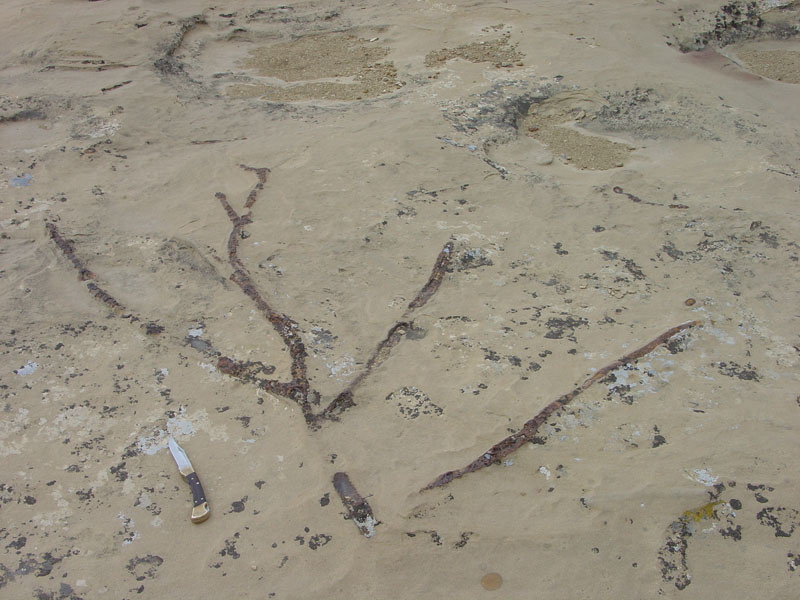| Chaco Canyon is also known for it paleontological resources including these fossil traces called Ophiomorpha nodosa. These unusual features are fossilized burrows of a shrimp-like crustacean known as Callianassa major and occur practically everywhere that the Cliff House Sandstone is exposed. The traces have a round, nodular texture from particles pasted to the sides of the passages, and the passages form interconnected networks. Iron minerals have replace the original nodular particles (probably sand mixed with fecal material and uneaten remains of the crustaceans prey). The crustaceans lived in shallow sandy seabed in a coastal setting along the coast in the Western Interior Seaway between about 80-76 million years ago(Molenaar and others, 2002; Penman, 2007). That seaway vanished as the Rocky Mountains began to rise in the region 70 to 65 million years ago. The nodular pattern is reminiscent of corn. and must have been intriguing to the ancestral Chacoans (NPS, 2006; Weimer and Holt, 1964). Note that the knife is 10 inches long for scale. |

